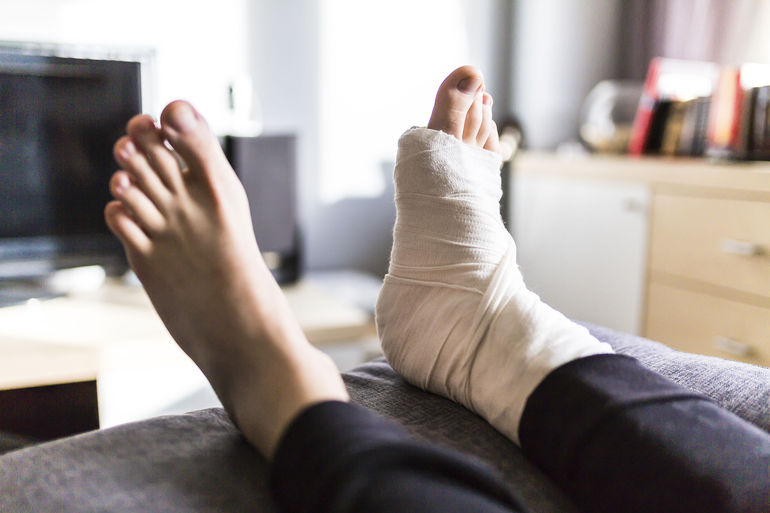The Centers for Advanced Orthopaedics is redefining the way musculoskeletal care is delivered across the region with locations throughout Maryland, DC, Virginia and Pennsylvania.
9 Tips for Recovering from Foot or Ankle Surgery

Recovery is absolutely essential after a foot and ankle surgical procedure. In this article, we are going to go through nine tips to remember when recovering from foot or ankle surgery.
Pain Management
Expect to be in some degree of pain following surgery. The bones in your foot and/or ankle are being manipulated in the operating room to correct the problem, which will cause pain. In general, the pain subsides after a few days to a week after surgery, depending on the type of surgery.
Your surgeon will be placing numbing medicine into your foot and/or ankle so you are more comfortable post-operatively. Since the numbing medicine will wear off, start taking the prescribed pain medications when you get home (before it wears off).
In general, our patients are discharged with one or two prescriptions for pain medication: a long acting pain medication and/or short acting pain medication. You will be discharged with enough pain medication to last until your first post-operative appointment. It is important that you take the pain medications as prescribed so that you will be as comfortable as possible.
Ice to the Surgical Sites
Ice: If you choose not to purchase an ice machine, ice may be applied. A bag of frozen vegetables is lightweight and inexpensive, can be molded around your foot and/or ankle, and provides the necessary cooling effect. We recommend icing on a consistent basis for the first several days after the procedure. The recommended time schedule is to apply ice for 15-30 minutes out of every hour. Be sure to check your skin frequently for abnormal color changes.
Call the office immediately if you have concerns about your foot. If you suffer from neuropathy, please ice for 10-15 minutes of every hour. It is vital you check your foot for signs of frostbite. After the first several days, ice can be used as needed for pain control.
Drainage and Bleeding
Drainage and bleeding after surgery are normal. You may notice blood or drainage on the dressing or splint. It is OK to place extra gauze or an ACE wrap over the dressing but do not take the entire dressing off.
If the blood or drainage continues to drip and the dressing is saturated with wet blood after the first 24 hours, call the office.
Numbness
Numbness in your foot and/or ankle after surgery is normal, as long as your toes are warm and their usual color. A regional nerve block at your ankle causes the temporary numbness, which may last anywhere from a few hours to a few days.
Skin Itchiness
Skin itching may be a side effect of the antibiotics, pain medications, or anesthesia. Over-the-counter diphenhydramine (Benadryl) 25-50 mg may be used after checking with your PCP. If large, reddish welts, hives or a rash accompanies the itching, call our office for further instructions.
If at any time, your mouth, tongue or eyes begin to swell or you have problems breathing, you must call 911 and proceed to the nearest Emergency Room.
Constipation
Narcotic pain medications and anesthesia can cause constipation. Over-the-counter stool softeners (e.g. Colace) can be taken daily to prevent constipation. If you fail to have a bowel movement in 2-3 days, over-the-counter laxatives (e.g. Correctol, Senokot) can be taken. Drinking plenty of water and eating fresh fruits and vegetables will also help. If you have not had a bowel movement five days after your surgery, contact our office for further instructions.
Urination
A Foley catheter may be placed into your urethra and bladder during surgery for urination. The catheter will be removed before you go home. If you are not able to urinate within 24 hours of your leaving the hospital, you must call the office. If the office is closed, page the on-call staff member for further instructions.
Be sure you drink plenty of fluids!
Nausea and Vomiting
Anesthesia, pain medications, and antibiotics can cause nausea and vomiting. Eating bland foods, such as crackers, toast, rice, bananas, and clear liquids are the best options for nausea. Take prescribed medications with food.
Flying
Flying: Flying too soon after surgery may place you at risk for developing a blood clot in your leg. If you have travel plans that involve flying, please remember to consult with your surgeon or our Physician Assistant at your pre-operative or post-operative visits